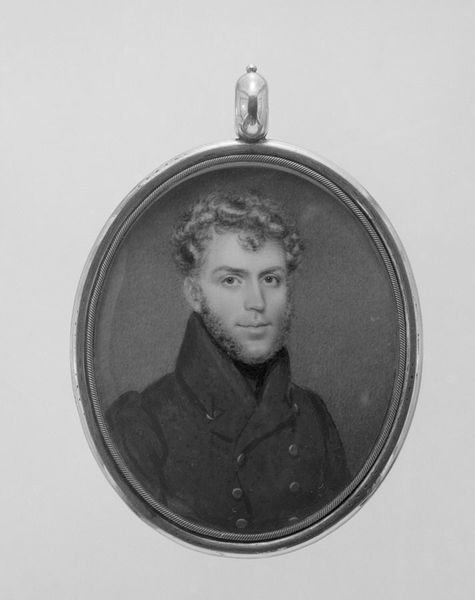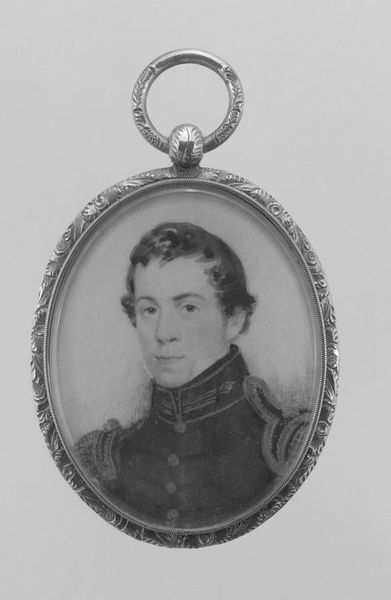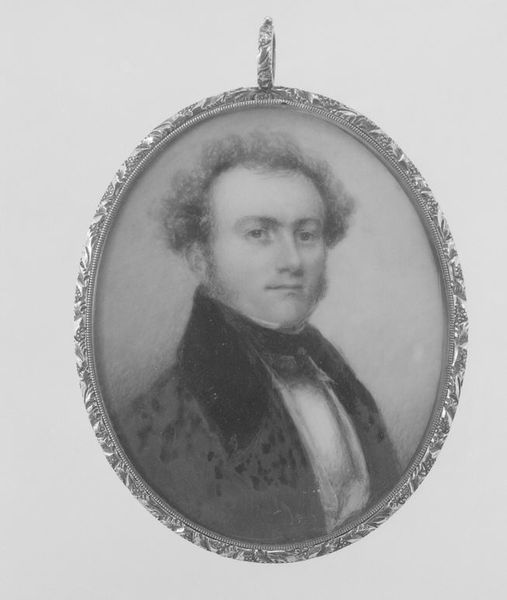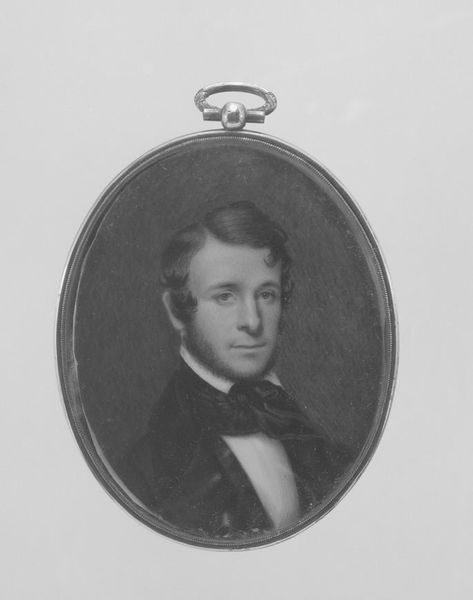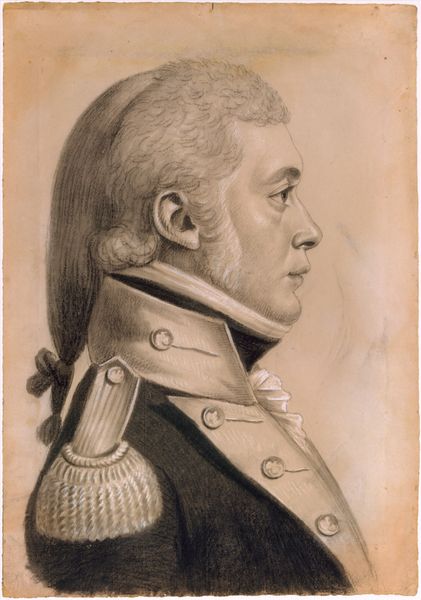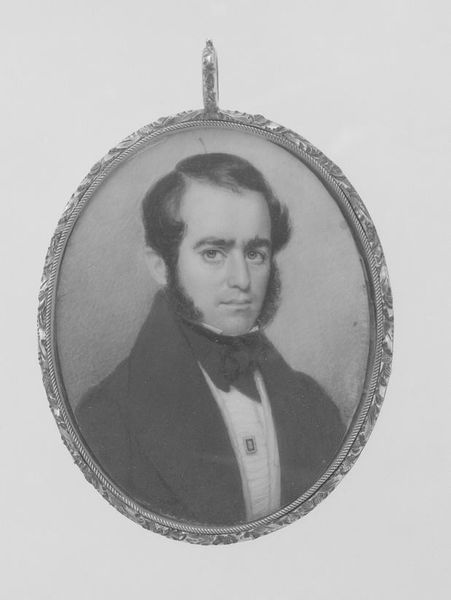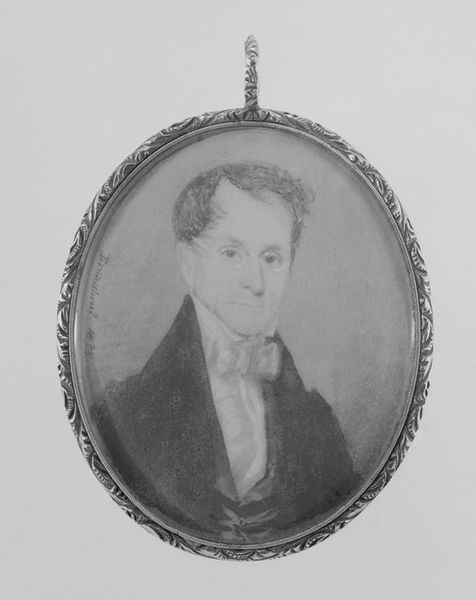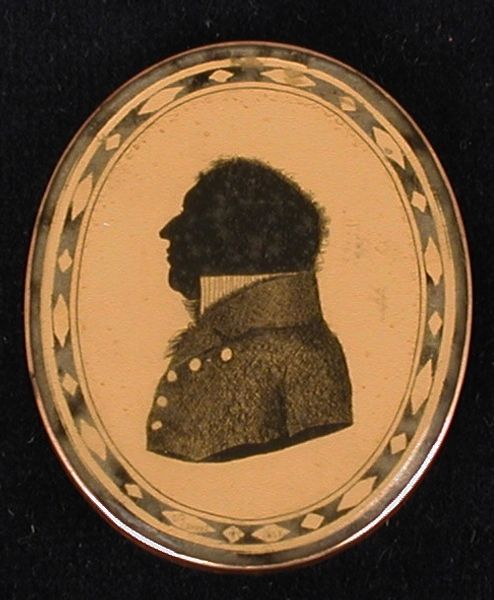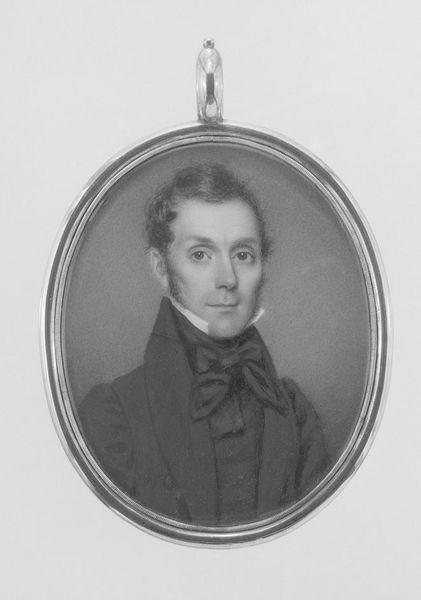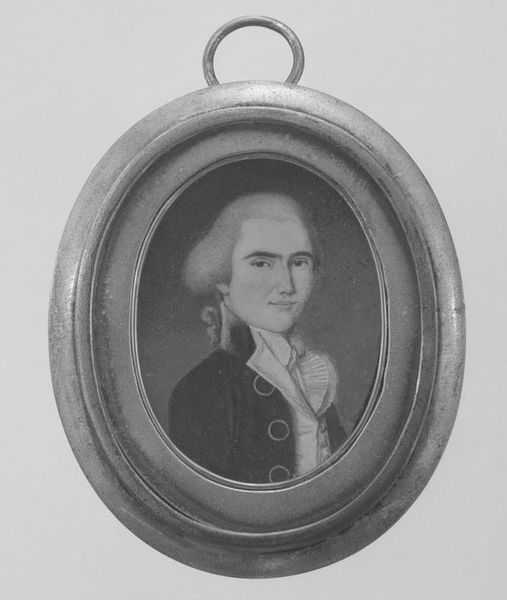
painting, graphite
#
portrait
#
painting
#
romanticism
#
graphite
#
miniature
Dimensions: Oval, 3 1/4 x 2 1/2 in. (78 x 62 mm)
Copyright: Public Domain
Curator: Here we have an intriguing piece titled "Portrait of an Officer," likely crafted sometime between 1815 and 1825. Editor: The grayscale palette immediately strikes me; it gives the piece a feeling of stoic remove, as if looking back through layers of time. The stark contrast emphasizes the detail of his attire. Curator: Indeed. Notice how the unknown artist rendered this portrait using graphite, capturing exquisite details in a very small space, a form known as a miniature. The officer's hat, particularly, speaks to the sartorial customs of the era and to military power. Editor: The hat seems intentionally exaggerated. It amplifies his presence, contrasting his otherwise somewhat demure facial expression. There's a curious dichotomy at play—bold declaration of rank versus subtly communicated human vulnerability. Curator: I see this tension too. In a sense, his uniform is not simply clothing but an emblem, a representation of loyalty, order, and, dare I say, the collective identity of a military body. Editor: His gaze is quite penetrating considering the size of the artwork, isn't it? Almost unsettling given the romantic undertones of such portraiture. Is he facing us, or perhaps gazing beyond, as though expecting us to know his secrets? Curator: Perhaps it captures an officer caught between societal expectations and his own emotions. His uniform is a form of armor, a prescribed persona, behind which he, like any human, must have contended with doubt and mortality. The very small scale becomes meaningful; this grand persona is presented intimately, as if he entrusted you to hold his gaze, secrets and all. Editor: This makes you reflect on the constraints imposed upon these individuals and how art might then offer subtle counter-narratives, capturing nuanced identities against those social expectations. Thank you, it certainly opens the dialogue between our history and the ways we continue to perceive power. Curator: A valuable perspective, and one I believe deepens our understanding of this work, enabling us to engage with its symbolic resonance today.
Comments
No comments
Be the first to comment and join the conversation on the ultimate creative platform.


